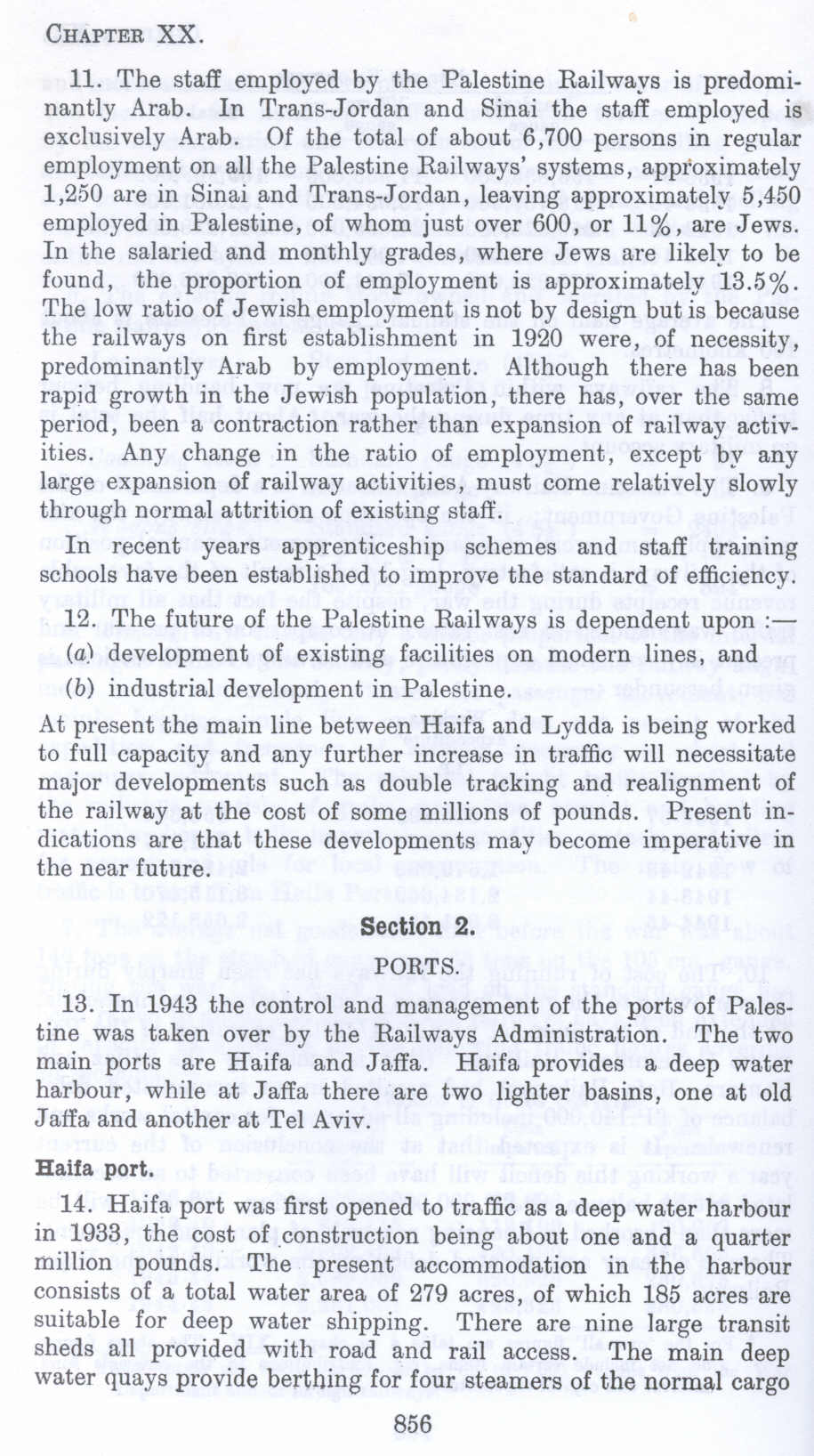| Prev | Next |  |
| Prev | Next |
| PalestineRemembered | About Us | Oral History | العربية | |
| Pictures | Zionist FAQs | Haavara | Maps | |
| Search |
| Camps |
| Districts |
| Acre |
| Baysan |
| Beersheba |
| Bethlehem |
| Gaza |
| Haifa |
| Hebron |
| Jaffa |
| Jericho |
| Jerusalem |
| Jinin |
| Nablus |
| Nazareth |
| Ramallah |
| al-Ramla |
| Safad |
| Tiberias |
| Tulkarm |
| Donate |
| Contact |
| Profile |
| Videos |
Palestine's ports before 1948 (Nakba): Jaffa & Haifa, British Mandate: A Survey of Palestine: Volume II - Page 856. Chapter XX: Communication : Section 2 |
Disclaimer
The above documents, article, interviews, movies, podcasts, or stories reflects solely the research and opinions of its authors. PalestineRemembered.com makes its best effort to validate its contents.


Post Your Comment
*It should be NOTED that your email address won't be shared, and all communications between members will be routed via the website's mail server.
11. The staff employed by the Palestine Railways is predominantly Arab. In Trans-Jordan and Sinai the staff employed is exclusively Arab. Of the total of about 6,700 persons in regular employment on all the Palestine Railways' systems, approximately 1,250 are in Sinai and Trans-Jordan, leaving approximately 5,450 employed in Palestine, of whom just over 600, or 11%, are Jews. In the salaried and monthly grades, where Jews are likely to be found, the proportion of employment is approximately 13.5%. The low ratio of Jewish employment is not by design but is because the railways on first establishment in 1920 were, of necessity, predominantly Arab by employment. Although there has been rapid growth in the Jewish population, there has, over the same period, been a contraction rather than expansion of railway activities. Any change in the ratio of employment, except by any large expansion of railway activities, must come relatively slowly through normal attrition of existing staff.
In recent years apprenticeship schemes and staff training
schools have been established to improve the standard of efficiency.
12. The future of the Palestine Railways is dependent upon :(a) development of existing facilities on modern lines, and
(b) industrial development in Palestine.
At present the main line between Haifa and Lydda is being worked to full capacity and any further increase in traffic will necessitate major developments such as double tracking and realignment of the railway at the cost of some millions of pounds. Present indications are that these developments may become imperative in the near future.
Section 2.
PORTS.
13. In 1943 the control and management of the ports of Palestine was taken over by the Railways Administration. The two main ports are Haifa and Jaffa. Haifa provides a deep water harbour, while at Jaffa there are two lighter basins, one at old Jaffa and another at Tel Aviv.
Haifa port.
14. Haifa port was first opened to traffic as a deep water harbour in 1933, the cost of _construction being about one and a quarter million pounds. The present accommodation in the harbour consists of a total water area of 279 acres, of which 185 acres are suitable for deep water shipping. There are nine large transit sheds all provided with road and rail access. The main deep water quays provide berthing for four steamers of the normal cargo
856